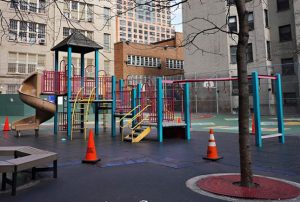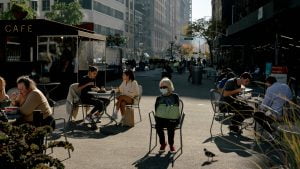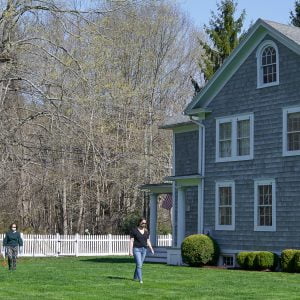In 2020, New Yorkers Fled During Covid
Go Back To Previous PageWhen did the covid 19 pandemic start in the United States? These pandemics in the U.S. changed many aspects of our lives that we often take for granted, and there was the entire social distancing ordeal. The sudden massive consumption and accumulation of toilet paper. Our constant review of the Centers for disease control website—the shift to working from home for a large portion of the population. New words like herd immunity became everyday lingo. And in real estate, the pandemic caused people to create a significant exodus from the largest cities in North America, and some got stuck in the suburbs.
toilet paper. Our constant review of the Centers for disease control website—the shift to working from home for a large portion of the population. New words like herd immunity became everyday lingo. And in real estate, the pandemic caused people to create a significant exodus from the largest cities in North America, and some got stuck in the suburbs.
In New York, people witnessed an unprecedented shift out of town. Virtually anyone who could afford to leave the city did.
You’re not alone if you’ve wondered what most people experienced during the COVID-19 exodus. Here’s what has changed since the coronavirus took to the city. Some people reading this article may still reside in the suburbs and wonder: when will the pandemic end?
The Demand For Suburban Living Stayed Somewhat Stable after Covid
It was no secret that demand skyrocketed for homes and apartments around the suburbs of New York City. Though many people were hard up for cash, the truth is that home prices and valuations skyrocketed—especially in noted “commuter towns” with low population densities. As it turns out, the demand stayed pretty stable after the initial peak demand that occurred once fear set in.
Though the search for a home isn’t as frantic as it was during the pandemic’s start, the truth is that the housing market hasn’t crashed as initially predicted.
Will more people move to the suburbs?
Economists say it’s still too early to tell if urbanites browsing suburban homes on sites like Zillow and Redfin and taking up temporary shelter in less densely populated areas will develop into a broader trend once the pandemic is contained. But recent sentiment among homebuyers suggests attitudes toward moving to the suburbs are shifting.
Robin Walpert, a real estate agent at Sotheby’s International Realty in Santa Monica, California, says activity has increased among New Yorkers looking to buy new properties with home offices, gym space, and land.
Many Continued To Work From Home After Covid’s Peak
As it turns out, many companies learned that they benefit from the work-from-home model, which saved them money and boosted employee morale. As a result of the incredible results of working from home, many companies decided to stick to the home office model for several of their departments.
As a result of the incredible results of working from home, many companies decided to stick to the home office model for several of their departments.
This turned out to be mutually beneficial. Most people enjoyed working from home, primarily since wages remained the same. This also reduced the need to worry about commutes to the city. As a result, many people saved big on the cost of living.
The relocation trend is reflected in real estate data from major US cities. According to a Zillow report from August, housing inventory in San Francisco has risen 96% year-over-year, meaning there are about twice as many homes listed for sale this year than last year.
Due to the newfound interest in telecommuting, more families have started requesting homes with extra rooms to create a home office.
Home Projects Became The New Way To Relax
Moving out of the city and living in the suburbs is not too bad for those who can afford it.
This is something that I learned as a home improvement writer. People are learning how to redo their homes in spades. Sometimes, they’ll even browse idea posts for new projects to try. It became a phenomenon that the New York Times called “Pandemic Projects.”
Of course, the projects weren’t just restricted to the indoors. Since the pandemic left us homebound, many of us took up another significant homey aspect: gardening. This hobby is easier to do in the suburbs than in the city. With that said, both city locals and new suburbanites took up this hobby.
Many Struggled To Get Used To Suburban Life
Living in New York City is a lifestyle many people don’t deal with. Believe it or not, people who are lifelong New Yorkers may have difficulty adjusting to the slower pace of life that the suburbs have. To make matters worse, the pandemic also meant that most entertainment venues weren’t open.
According to new research from investment management firm Cowen and Company, there’s been a noticeable migration among people ages 25 to 34 from urban areas to suburban ones. Among the 2,700 people Cowen surveyed, 48% of millennials reported living in the suburbs, compared with 44% in December 2019. Those who said living in cities fell to 35%, down from 38% last year.
As a result, these people felt stuck in the suburbs. Though most families felt relief at the public schools’ safety and the lovely communities they encountered, it’s still a significant life transition. Not all were happy with it; some even reported sleep disturbances due to the move.
Some Chose To Return To The City
Admittedly, suburban life isn’t for everyone, and it can be rough on people who need an urban environment to thrive. Some people bought homes to escape high-density areas while the pandemic ripped the country.
Once numbers fell, they returned to the city to resume their lives. This may have acted as one of the more common ways the upper crust handled everything.
According to new data from Harris Poll, nearly a third of Americans are considering moving to less densely populated areas after the pandemic. That may foreshadow a shift that would majorly impact residential real estate sales and home prices.
Urbanites (43%) were twice as likely than suburban (26%) and rural (21%) dwellers to have recently browsed a real estate website for homes and apartments to rent or buy, the survey showed, which was conducted among 2,050 U.S. adults from April 25-27.
However, Many Were Pretty Happy With Their Transition
While the COVID-19 pandemic disaster may still be unfurling, the truth is that it brought many issues that our society has to the forefront. It also had the added effect of forcing people to look at what matters and rethink their lives.
Many people discovered that the suburbs’ slower pace was precisely what the doctor ordered. As a result, they decided to stay there—even after the pandemic ended. However, whether or not they will ever return to New York remains to be seen.
The Extremely Wealthy Kept Both Their Apartments And Homes during Covid
Wealthier families immediately fled to their summer homes after word about the pandemic. Those starting to see a boom in their incomes around COVID-19 either backed out of the sale or decided to keep their suburban home as a rental or summer home.
incomes around COVID-19 either backed out of the sale or decided to keep their suburban home as a rental or summer home.
Therefore they are not precisely “stuck” in the suburbs. For these people having a pied-a-terre pays off. Otherwise, people wouldn’t be keeping their homes. With that said, no one would blame you for wanting to choose to use a property you own as an Airbnb.
The Bottom Line of The Pandemic
After a year that plunged the world into complete chaos, it’s tempting to assume that we can paint the people who left New York with a broad brush. The truth is that it’s a mixed bag.
However, some trends stayed stable. People found a new life in the suburbs and started to find a reason to stick around. Of course, the pull of the city was vital for some. As it turns out, how people came to enjoy their homes varied greatly—whether they found it a good choice.
It’s a K-shaped recovery. Wealthy people are doing well, and more affluent people can work remotely. Buyers seek more affordable homes and yard space for their families, home offices for parents, designated areas for remote learning for their children, and some gyms closed or customers wary of re-entering their workout spaces.
At least until the subsequent pandemics in the U.S., but when will the pandemic end?


